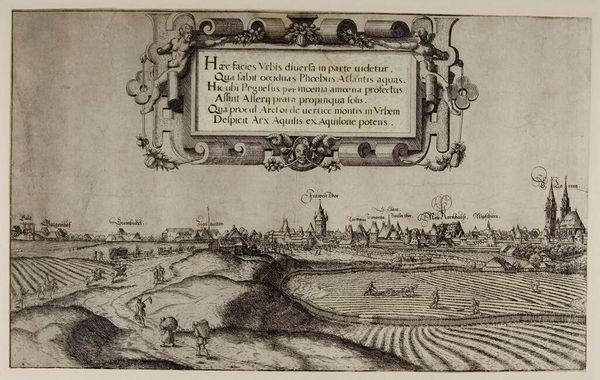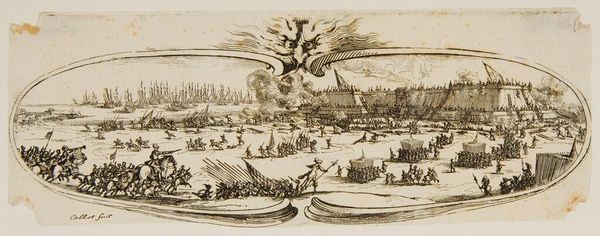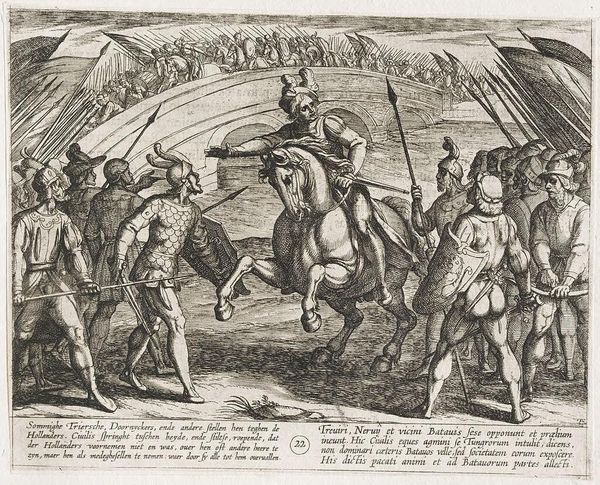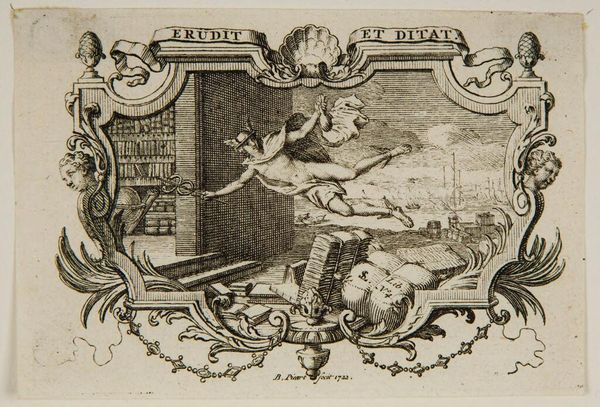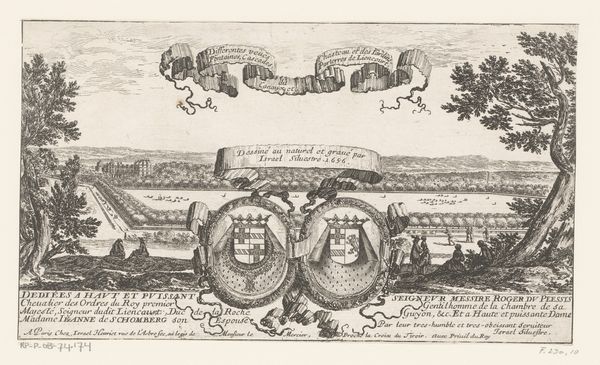
Presentation of English Prisoners (border, lower left) c. 17th century
0:00
0:00
Copyright: CC0 1.0
Curator: This etching by Jacques Callot, titled "Presentation of English Prisoners," captures a specific historical moment. The scene shows English prisoners being presented to a figure of authority. Editor: The mood seems celebratory, or at least triumphal, with detailed renderings of soldiers and weaponry framed by elaborate ornamental borders. Curator: Callot's work often reflects the political and social realities of his time. Consider the power dynamics at play here—the victorious presenting the defeated. Editor: It is difficult to ignore the uncomfortable tension in observing such a scene, and it raises questions about the glorification of conflict and the dehumanization of the captured. Curator: Indeed. Callot's decision to frame this event with such decorative elements serves to normalize, even sanitize, a brutal reality. Editor: I appreciate the detail and technical skill, but also feel a sense of unease, a reminder of how art can be used to perpetuate narratives of dominance. Curator: Yes, reflecting on the role of art in shaping public memory is what makes historical analysis so important. Editor: Absolutely. It's in unpacking these layers that we can truly grapple with the legacies of the past.
Comments
No comments
Be the first to comment and join the conversation on the ultimate creative platform.





